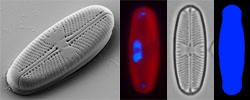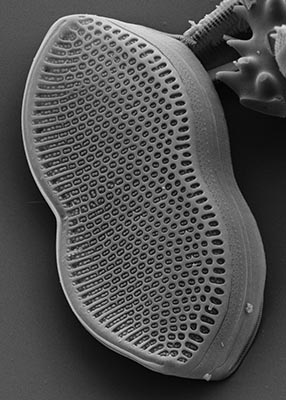- AG Nitzschia cf. bulnheimiana
- BA14 Nitzschia sp.
- BAC901CAT Bacillaria sp.
- BC0053 Nitzschia cf. fonticola
- BC0076 Nitzschia sp.
- BC0083 Nitzschia linearis
- BC0098 Nitzschia acidoclinata
- BC0273 Nitzschia linearis
- BC0307 Nitzschia heufleriana
- BC0308 Nitzschia cf. sigma
- BC0317 Nitzschia sp.
- BC0325 Nitzschia draveillensis
- BC0330 Nitzschia alicae
- BC0332 Nitzschia alicae
- BC0333 Nitzschia pusilla
- BC0461 Nitzschia fonticola
- BC0469 Nitzschia costei
- BC0470 Nitzschia cf. dissipata var. media
- BC0483 Nitzschia cf. paleacea
- BC0486 Nitzschia amphibia
- BC0501 Nitzschia cf. soratensis
- BC0502 Tryblionella debilis
- BC0503 Nitzschia amphibia
- BC0619 Nitzschia acidoclinata
- BC0649 Nitzschia dissipata var. media
- BC0650 Nitzschia cf. romana
- BC0669 Nitzschia linearis
- BC0675 Nitzschia cf. paleacea
- BC0696 Nitzschia linearis
- BC0701 Nitzschia amphibia
- BC0712 Nitzschia linearis
- BC0713 Nitzschia capitellata
- BC0722 Nitzschia amphibia
- BC0730 Nitzschia cf. perminuta
- BC0769 Nitzschia cf. recta
- BC0787 Nitzschia sigmoidea
- BC0795 Nitzschia cf. recta
- BC0799 Nitzschia cf. palea
- BC0806 Nitzschia cf. paleacea
- BC0815 Nitzschia linearis
- BC0822 Nitzschia aff. fruticosa
- BC0838 Nitzschia cf. perminuta
- BC0850 Nitzschia aff. sublinearis
- BC0866 Nitzschia dissipata var. media
- BC0868 Nitzschia dissipata var. media
- BC0897 Nitzschia linearis
- Belgium2 Nitzschia palea
- CCMP558 Nitzschia cf. pusilla
- Egypt Nitzschia palea
- G1_2 [L54] Nitzschia inconspicua
- G3_2 [L58] Nitzschia inconspicua
- G3_3 [L61] Nitzschia inconspicua
- G3_4 [L62] Nitzschia inconspicua
- G5_2 [NIT1005CAT] Nitzschia inconspicua
- India Nitzschia_palea
- IRTA1 Nitzschia pusilla
- IRTA2 Nitzschia pusilla
- IRTA3 Nitzschia pusilla
- Japan A1 Nitzschia palea
- Japan D Nitzschia palea
- Japan F Nitzschia palea
- KSA0035 Nitzschia celaenoi
- KSA0039 Nitzschia volvendirostrata
- L44 Nitzschia cf. ardua
- L56 Nitzschia cf. microcephala
- Manaus [Brazil] Nitzschia palea
- NIT1003CAT Nitzschia cf. pusilla
- NIT1004CAT Nitzschia cf. aequorea
- NIT1008KEL_NIT1009KEL Nitzschia soratensis
- NIT1010KEL Nitzschia palea
- NIT1011KEL Nitzschia palea
- NIT1013ABR Nitzschia cf. sigma
- NIT145D Nitzschia sp.
- NIT327TM Nitzschia umbonata
- NIT328TM Nitzschia acidoclinata
- NIT331TM Nitzschia acidoclinata
- NIT337TM Nitzschia cf. hantzschiana
- Nit24 Nitzschia frustulum
- Nit25 Nitzschia frustulum
- Nit44 Nitzschia cf. pusilla
- Nit51 Nitzschia cf. gracilis
- Nit53 Nitzschia linearis
- Nit57 Nitzschia cf. pumila
- NIT945CAT Nitzschia cf. pusilla
- NIT952CAT Nitzschia varelae
- Paraguay Nitzschia palea
- Psammodictyon_Corsica Psammodictyon sp.
- R10 Nitzschia microcephala
- R12 Nitzschia palea
- R2 Nitzschia lembiformis
- R20 Nitzschia acicularis
- R8 Nitzschia palea
- RT_amphibia Nitzschia amphibia
- s0309 Psammodictyon constrictum
- s0819 Nitzschia sp.
- SpainA2 Nitzschia palea
- SpainA3 Nitzschia palea
- SpainA4 Nitzschia palea
- SriLankaA Nitzschia palea
- SriLankaB Nitzschia palea
- SZCZCH97 Tryblionella gaoana
- SZCZCH658 Nitzschia sp. (sect. Dubiae)
- SZCZCH845 Nitzschia cf. volvendirostrata
- SZCZCH966 Nitzschia aurariae
- SZCZCH967 Amphora vixvisibilis
- SZCZCH970 Nitzschia traheaformis
- SZCZCH971 Nitzschia traheaformis
- SZCZCH972 Nitzschia traheaformis
- SZCZCH974 Nitzschia nanodissipata
- SZCZCH1090 Nitzschia sp.
- SZCZE328 Psammodictyon sp.
- SZCZE331 Psammodictyon sp.
- SZCZE431 Nitzschia rectilonga
- SZCZE459 Psammodictyon sp.
- SZCZM117 Nitzschia sp.
- SZCZM119 Achnanthes sp.
- SZCZP36 Nitzschia volvendirostrata
- SZCZP613 Bacillaria sp.
- TCC474 Nitzschia inconspicua
- TCC487 Nitzschia inconspicua
- TCC488 Nitzschia inconspicua
- TCC510 Nitzschia inconspicua
- TCC521 Nitzschia costei
- TCC533 Nitzschia fonticola
- TCC543 Nitzschia acidoclinata
- TCC550 Nitzschia costei
- TCC551 Nitzschia costei
- TCC571 Nitzschia inconspicua
- TCC576 Nitzschia gracilis
- TCC586 Nitzschia cf. pusilla
- TCC665 Nitzschia cf. pusilla
- TCC707 Nitzschia dissipata
- TCC853 Nitzschia communis
- TCC876 Nitzschia dissipata var. media
- TCC885 Nitzschia perminuta
- TCC886 Nitzschia cf. palea
- TCC896 Nitzschia pusilla
- TCC898 Nitzschia cf. pusilla
- TCC900 Nitzschia cf. pusilla
- TCC949 Nitzschia reskoi
- TRY1006CAT Tryblionella cf. compressa
- TRY1007CAT Tryblionella cf. compressa
- TRY946CAT Tryblionella apiculata
- TRY947CAT Tryblionella apiculata
- TRY949CAT Tryblionella apiculata
- TRY951CAT Tryblionella hungarica
- TRY981CAT Tryblionella hungarica
- TRY986CAT Tryblionella hungarica
David Mann, Rosa Trobajo and Andrzej Witkowski
Royal Botanic Garden Edinburgh, UK,, Institute for Agrifood Research and Technology, Catalonia, Spain, and University of Szczecin, Poland
December 2019 and September 2020


 This site is hosted
by
the Royal Botanic
Garden Edinburgh.
This site is hosted
by
the Royal Botanic
Garden Edinburgh.